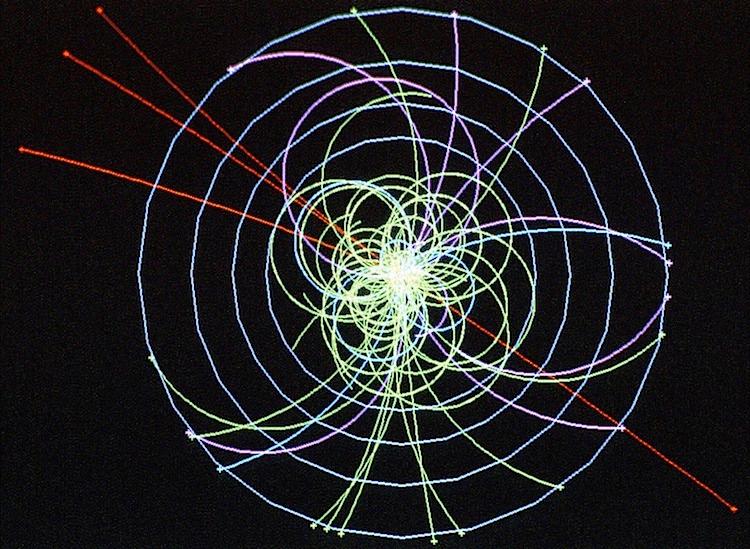New research from the European Organization for Nuclear Research (CERN) shows significant progress in the hunt for the subatomic Higgs boson, yet its short-lived existence or non-existence still cannot be conclusively proven.
The ATLAS (A Toroidal LHC Apparatus) and CMS (Compact Muon Solenoid) experiments at CERN’s Large Hadron Collider (LHC) have revealed that if it does indeed exist, the so-called god particle probably has a mass constrained to the range of 116–130 gigaelectronvolts (GeV) by ATLAS, and 115–127 GeV by CMS.
According to the Standard Model Higgs boson, only 4 percent of fundamental particles and their interacting forces can be described, with the remaining 96 percent invisible. The LHC research program aims to surpass this model, with Higgs bosons being a potential solution.
These hypothesized particles can decay in various ways, and may be pinpointed by observing the matter that they form. Multiple independent measurements from the experiments suggest that they exist in the region of 124 to 126 GeV.
“We have restricted the most likely mass region for the Higgs boson to 116–130 GeV, and over the last few weeks we have started to see an intriguing excess of events in the mass range around 125 GeV,” said ATLAS experiment spokesperson Fabiola Gianotti in a press release.
“This excess may be due to a fluctuation, but it could also be something more interesting,” she continued. “We cannot conclude anything at this stage.”
Both experiments will continue analysis refinement ready for the winter particle physics conferences in March. But additional data is needed to reach a definitive conclusion, which probably will not arrive until later next year.
“We cannot exclude the presence of the Standard Model Higgs between 115 and 127 GeV because of a modest excess of events in this mass region that appears, quite consistently, in five independent channels,” said Guido Tonelli, CMS experiment spokesperson, in the release.
“The excess is most compatible with a Standard Model Higgs in the vicinity of 124 GeV and below but the statistical significance is not large enough to say anything conclusive,” he explained. “As of today what we see is consistent either with a background fluctuation or with the presence of the boson.”
The original standard model was proposed in the 1960s, but other variations are possible and could lead to the development of new physics. The two experiments currently cannot support measurement of a non-Standard Model Higgs.
Regardless of the exact nature of the results in the pipeline, it is expected that new physics will be elucidated by the program in the coming months.







